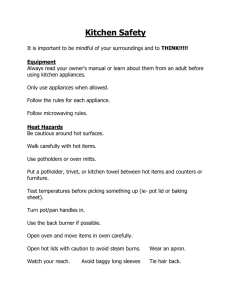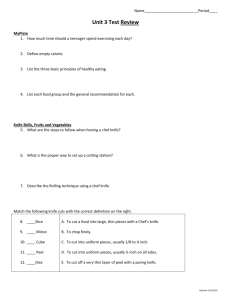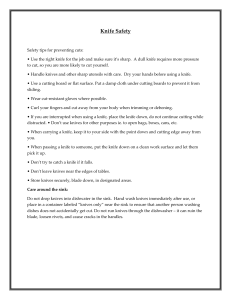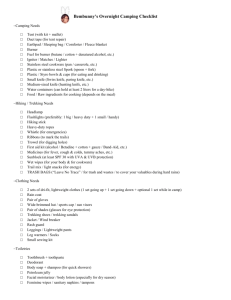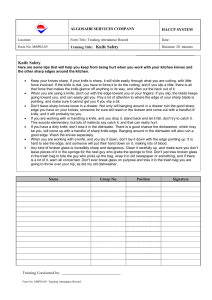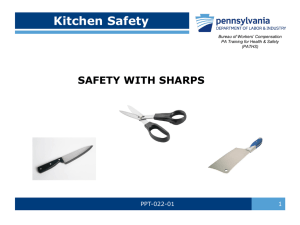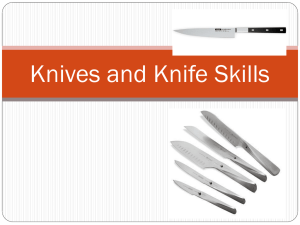Knife Powerpoint kitchen_knives_powerpoint
advertisement
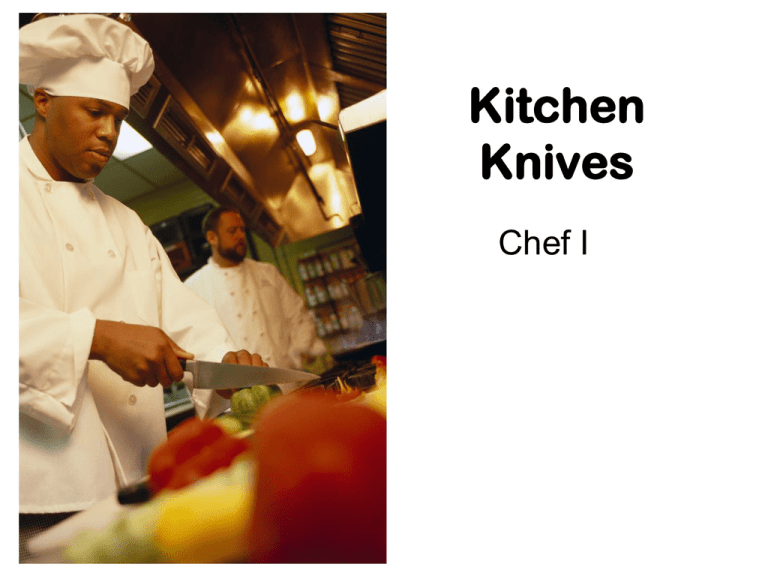
Kitchen Knives Chef I Common Kitchen Knives • Chef Knife – Most commonly used knife, best for precision cuts and mincing • Paring Knife – Fruits, vegetables, small cuts • Serrated Knife – Bread, tomatoes, other soft items Others: Utility, Boning, Filet, and more (not used in this class) Parts of the CHEF KNIFE How to cut SAFELY 1. The most important thing about knives is that they are sharp. (Less force = less likelihood of injury) 2. Cut away from your body (diagonally) 3. Use the claw technique. 4. Always cut on a cutting board. (make it nonslip with damp paper towel) 5. Never put knives into a sink filled with soapy water – wash and dry separately! Common Knife Cuts • Coarsely Chopped: large sized, irregular pieces • Chopped: medium sized, irregular pieces • Minced: small sized, irregular pieces • Finely Minced: extra small, irregular pieces • Sliced: cut crosswise, ¼ inch thick Precision Knife Cuts • Medium Dice: ½ x ½ x ½ inches • Batonnet (bat-tow-nay): ¼ x ¼ x 2 inches • Small Dice: ¼ x ¼ x ¼ inches • Julienne: 1/8 x 1/8 x 2 inches • Brunoise(broon-wah): 1/8 x 1/8 x 1/8 inches Other Cuts • Cookies/Crackers – Crushed (use rolling pin or food processor) • Herbs: – Snipped (put herbs in cup and cut with kitchen shears) – Chiffonade (stack leaves, roll like a burrito and then slice)
